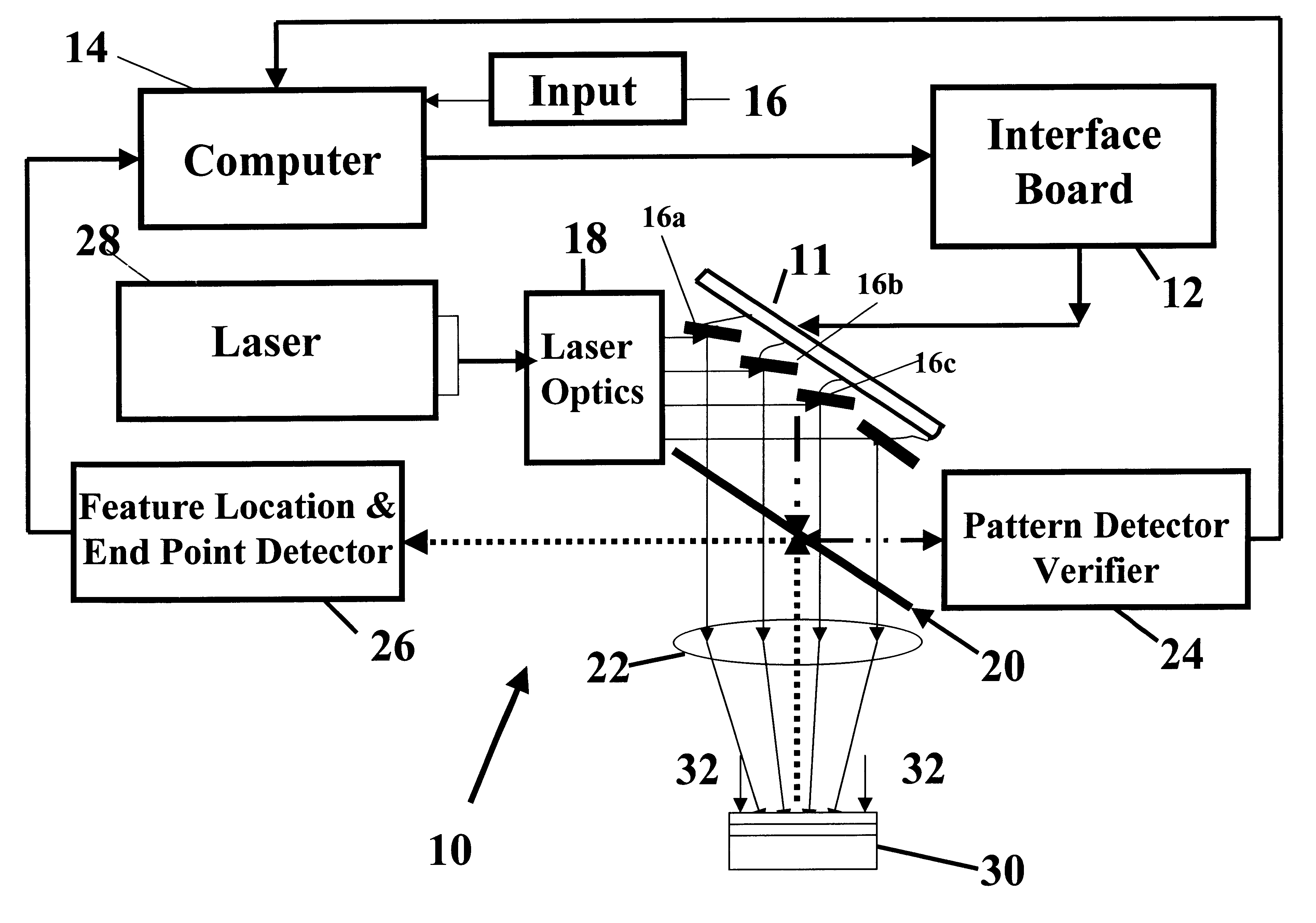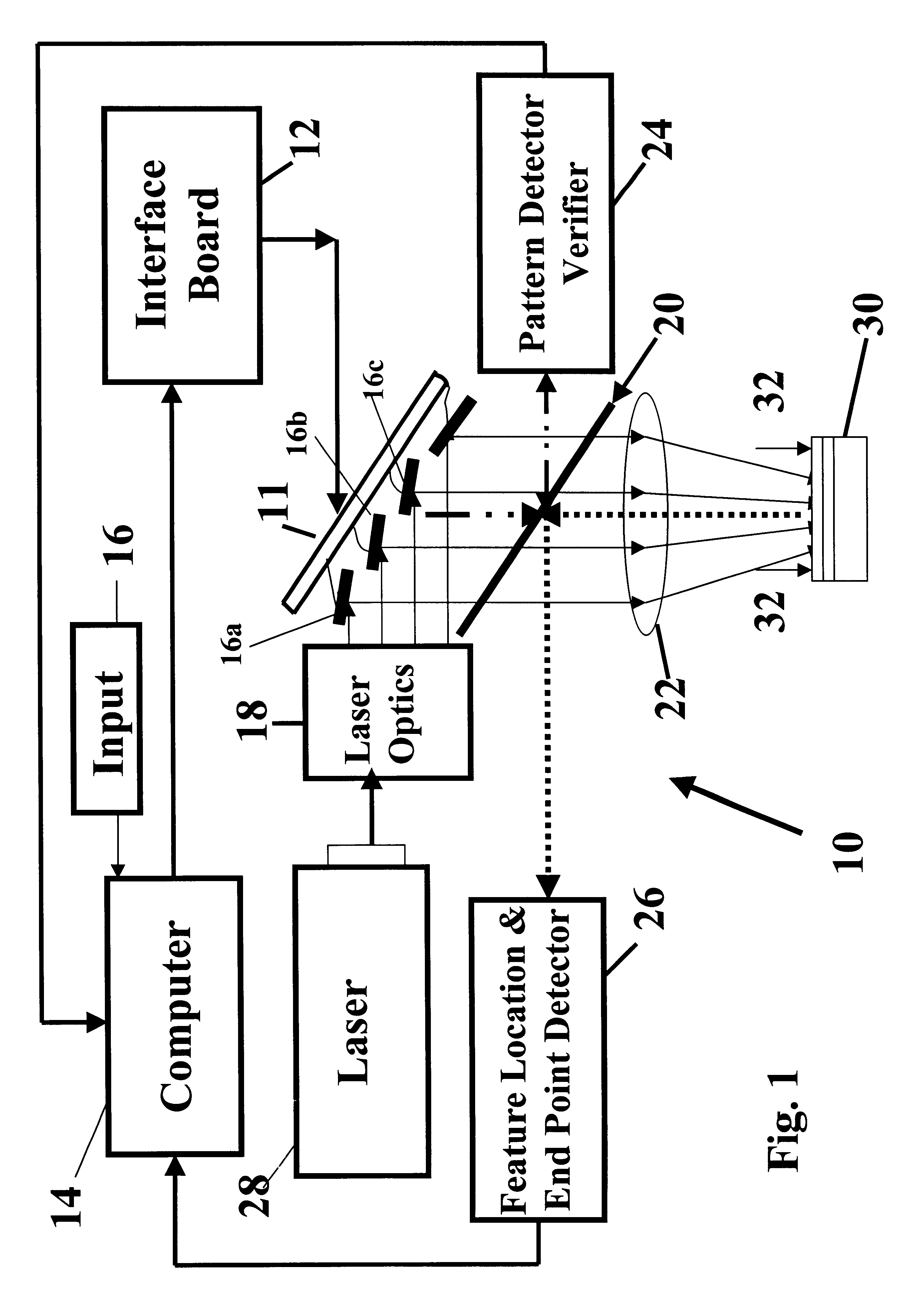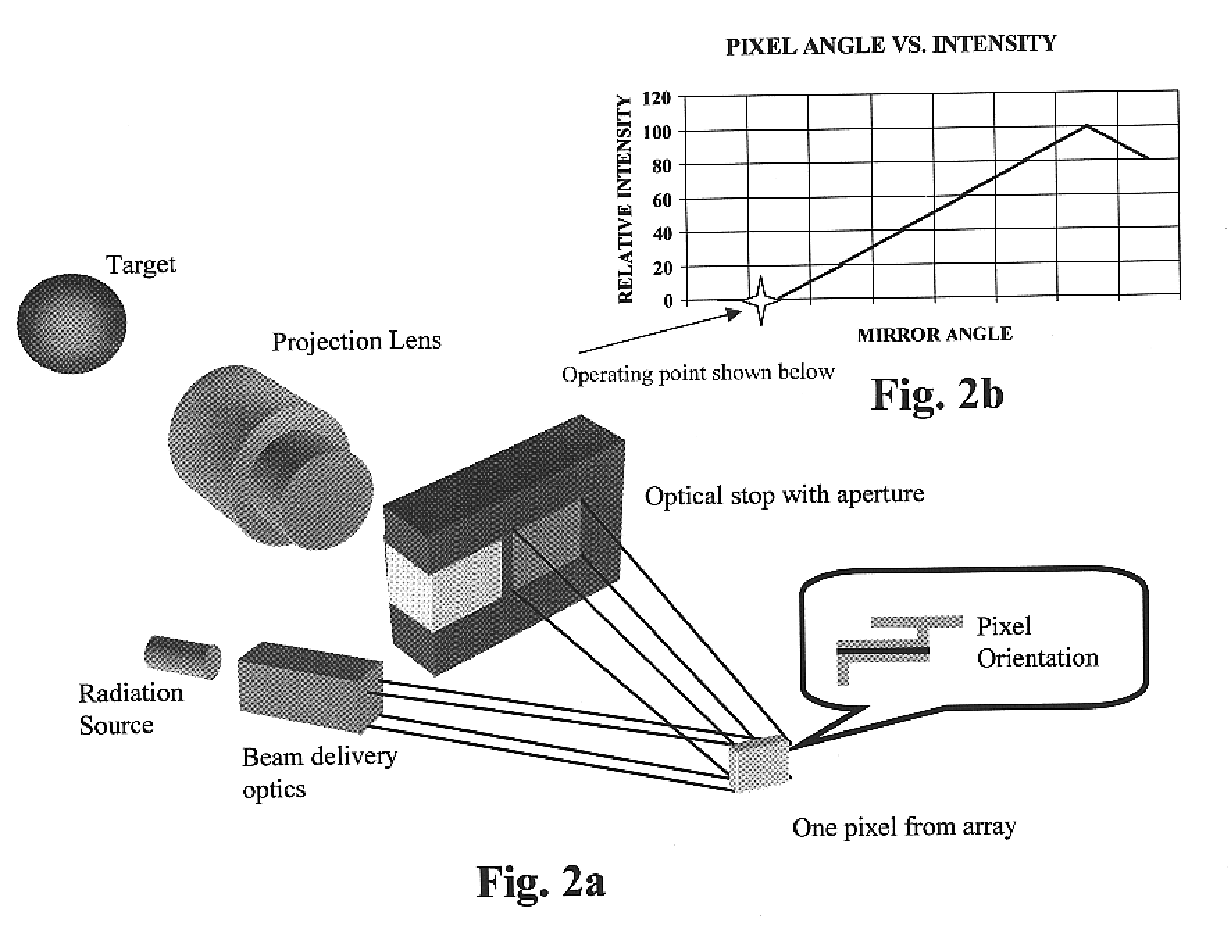Maskless laser beam patterning ablation of multilayered structures with continuous monitoring of ablation
a laser beam patterning and laser machine technology, applied in the field of maskless laser beam patterning ablation with continuous monitoring of ablation, can solve the problems of limited ablation process selectivity, time-consuming and costly creation of physical masks, and patents that do not disclose the desirable ablation etching of low uv absorption
- Summary
- Abstract
- Description
- Claims
- Application Information
AI Technical Summary
Benefits of technology
Problems solved by technology
Method used
Image
Examples
Embodiment Construction
During the course of this description like numbers will be used to identify like elements according to the different views that illustrate the invention.
FIG. 1 shows a schematic diagram of a preferred embodiment 10 of the maskless laser beam apparatus of the present invention. The apparatus includes a thin-film micromirror array 11, an interface board 12, a computer 14, a computer input 16, laser optics 18, beam splitter 20, re-imaging optics 22, pattern detector and verifier 24, feature location & end point detector 26, and a laser 28. Operationally, a laser beam emanating from laser 28 is split into a plurality of laser beamlets by laser optics 18, and then modulated and reflected by individual micromirrors 11a,b,c . . . through re-imaging optics 20 onto the surface of workpiece 30.
A key element of this apparatus is the thin-film micromirror 11, which has a plurality of individual micromirrors 11a,b,c . . . , each of which can be individually tilted with respect to incident laser ...
PUM
| Property | Measurement | Unit |
|---|---|---|
| width | aaaaa | aaaaa |
| size | aaaaa | aaaaa |
| size | aaaaa | aaaaa |
Abstract
Description
Claims
Application Information
 Login to View More
Login to View More - R&D
- Intellectual Property
- Life Sciences
- Materials
- Tech Scout
- Unparalleled Data Quality
- Higher Quality Content
- 60% Fewer Hallucinations
Browse by: Latest US Patents, China's latest patents, Technical Efficacy Thesaurus, Application Domain, Technology Topic, Popular Technical Reports.
© 2025 PatSnap. All rights reserved.Legal|Privacy policy|Modern Slavery Act Transparency Statement|Sitemap|About US| Contact US: help@patsnap.com



